Notes: Upper Sydenham Station was located within a curve of the Hollow Combe Ridge between the Crescent Wood and Paxton Tunnels. The booking office and station house was located on the ridge in Wells Park Road with steps and a path running down the side of the Combe to the platforms; this path was prone to regular land slips. The station served an area of large well separated villas with ample gardens.
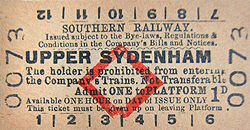 |
Traffic was always light and by 1910 it was missed by as many as 30 up and 20 down trains a day. Immediately south of its platforms the line crossed above the Penge Tunnel on the LCDR Penge Junction (Beckenham) - Herne Hill line of 1863. A traffic census taken in February 1926 after shows what poor business the electric trains were doing: The idyllic |
surroundings of Upper Sydenham saw only 211 up passengers and 216 arrivals the whole day.
BRIEF HISTORY OF THE CRYSTAL PALACE HIGH LEVEL BRANCH
The Great Exhibition in Hyde Park attracted just over six million visitors to the Crystal Palace between May and October 1851. After closure the structure was dismantled and in August 1852 the rebuilding began on a site at Sydenham Hill. The intention was to create a winter park and garden providing the finest display of rare plants and trees and to display replicas of the world’s finest statues; the reconstructed Palace was opened by Queen Victoria in June 1854. To cater for the expected huge influx of visitors the London Brighton & South Coast Railway (LBSCR) opened a station serving the area on 10th June 1854 but the station was not ideally sited and involved visitors walking along a 720ft glass covered colonnade. The station was called Crystal Palace but will be referred to hear as ‘Low Level’, a name it didn’t actually get until 1898.
 |
The Crystal Palace and South London Junction Railway was authorised on 17.7.1862 to build a line from Peckham Rye to a large covered terminus alongside the Palace with a subway from one end of the station under the road into the grounds.
| It was opened on 1.8.1865 from Cow Lane Junction east of Peckham Rye on the LBSCR to a terminus called Crystal Palace High Level; there were no intermediate stops with 19 trains a day running to and from Victoria, this was increased to 33 trains a day the following year. Two intermediate stations were opened later that year at Lordship Lane (1st September 1865) |
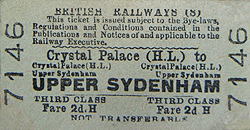 |
and Honor Oak (1st December 1865) and a further station was opened at Nunhead on 1st September 1871 to cater for a new housing development.
Despite the terminus being conveniently sited, the branch came too late as the Crystal Palace excursion traffic was already falling as the Palace failed to attract the expected visitors. In 1866 a fire destroyed the north transept of the Palace and it was never rebuilt and a strong and successful opposition to Sunday opening further damaged its commercial prospects.
The CP & SLJR was incorporated into the London Chatham & Dover Railway in 1875 and five years later the LBSCR merged with the South Eastern Railway to become the South Eastern & Chatham Railway. The district was beginning to develop and another intermediate station was opened at Upper Sydenham on 1st August 1884.
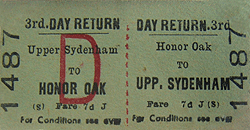 |
Despite more new housing in the 1880's and 1890's, the Crystal Palace High Level branch was poorly used as there was severe competition from the LBSCR lines, the three intermediate stations were all close to an LBSC station. The line's catchment area included cemeteries, very low density villa development and extensive open areas of the Dulwich College estate |
who had demanded restrictions prior to the building of the line imposing special architectural treatment of some of the railway structures. In 1908 there was further competition after the introduction of electric trams and later busses.
One of the last great occasions at the Palace was the Festival of Empire and Imperial Exhibition held between May and October 1911 with the LBSCR and the SECR competing for passengers at the High Level and Low Level Stations. In the same year, to celebrate the coronation of King George V, the ‘Kings Fete’ was held at the Palace on 30th June with 105 special trains bringing over 100,000 people to the Palace, 47 of them to the High Level Station.
With manpower shortages during WW1, the High Level branch was expendable and the line was closed on 31.12.1916; it was reopened on 1.3.1919 to take advantage of the traffic generated from the demobilization centre at the Palace. Initially there was only a service to St. Paul’s (now Blackfriars) but the London Bridge service was reinstated from 9.7.1924.
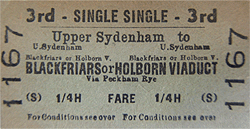 |
The service to the Low Level Station from London Bridge had been electrified in 1912 and the High Level line was included in the SECR electrification proposals of 1920 but nothing was done until the formation of the Southern Railway in 1923. As part of the electrification Nunhead Station was resited a short distance to the west on 3rd May 1925 and |
signalboxes at Nunhead Bank, Lordship Lane and Upper Sydenham were closed with only Crystal Palace and Honor Oak remaining in use. A sub station was built at Upper Sydenham with a shaft down to the Penge tunnel below providing a power cable connection. The third-rail electric service started on 12.7.1925 with a 20 minute service on weekdays from St. Paul’s.
There was some modest growth after electrification but traffic remained disappointing. A traffic census taken in February 1926 showed that the 53 departures from Crystal Palace High Level between 6.05 am and 11.22 pm carried only 703 passengers (less than one rush hour train load for the busiest London lines).
On 30th November 1936 the Palace was destroyed by fire attracting crowds far larger than any seen there for very many years and prompted the last special train for a Palace event with a train being provided for sore-eyed spectators in the early hours. After the fire, pleasure traffic dropped to virtually nothing and when the service was reduced as war time measure in 1940 the remaining passengers began to drift away to other Southern stations, trams and buses. From 6th January 1941 the branch was worked as a shuttle to and from Nunhead but due to the wartime manpower shortage the line was closed on 21.5.1944.
After the war, the line reopened on 4.1.1946 when the shuttle service was reintroduced with some peak hour trains to and from Blackfriars. Passenger numbers didn't improve however with many trains during the day running almost empty. With all the stations and the cabling requiring substantial repairs and renewal and no hope of traffic improvement and with more convenient
|
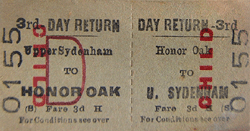 |
facilities readily available, the line's fate was sealed. Closure was announced in January 1954 with the last electric train running on 18th September that year and the daily freight carrying domestic fuels to the yards at Honor Oak and High Level from Herne Hill ceased at the same time; this was the first permanent closure of an electrified line. On the following day a final steam excursion ran into High Level from Richmond.
Dismantling of the High Level branch proved a slow business occupying much of 1956 and early 1957. Once this had been completed the entire railway land between Nunhead and Crystal Palace was bought by the London County Council who passed it on to local councils for housing and open space development. Although all of the station sites have now been lost under new housing much of the remainder of the route can still be traced forming a five mile railway trail known as ‘From the nun’s head to the screaming Alice’. Both portals of the Paxton and Crescent Wood tunnels survive as does the ornate Coxes Walk footbridge which crosses the line south of Lordship Lane station site.
Source: London's Local Railways by Alan A. Jackson - Published by David & Charles - 1978 & (2nd edition) 1999 - ISBN 0 7153 7479 6. Tickets from Brian Halford
Other web sites: Abandoned Tube Stations, Crystal Palace Campaign and Southern E-Group
To see other stations on the Crystal Palace High Level branch click on the station name: Nunhead, Honor Oak, Lordship Lane & Crystal Palace High Level |

old15.jpg)
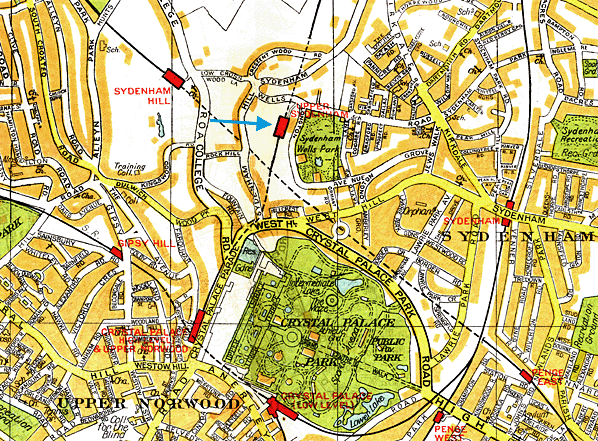
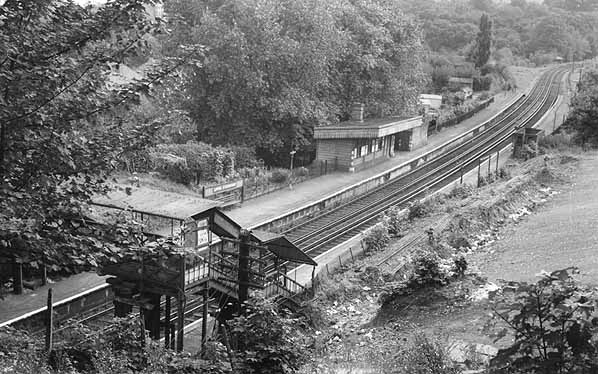
old17.jpg)
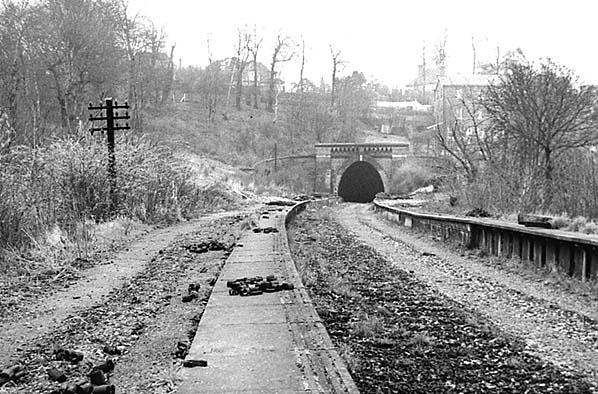
21.jpg)
 Home Page
Home Page 





